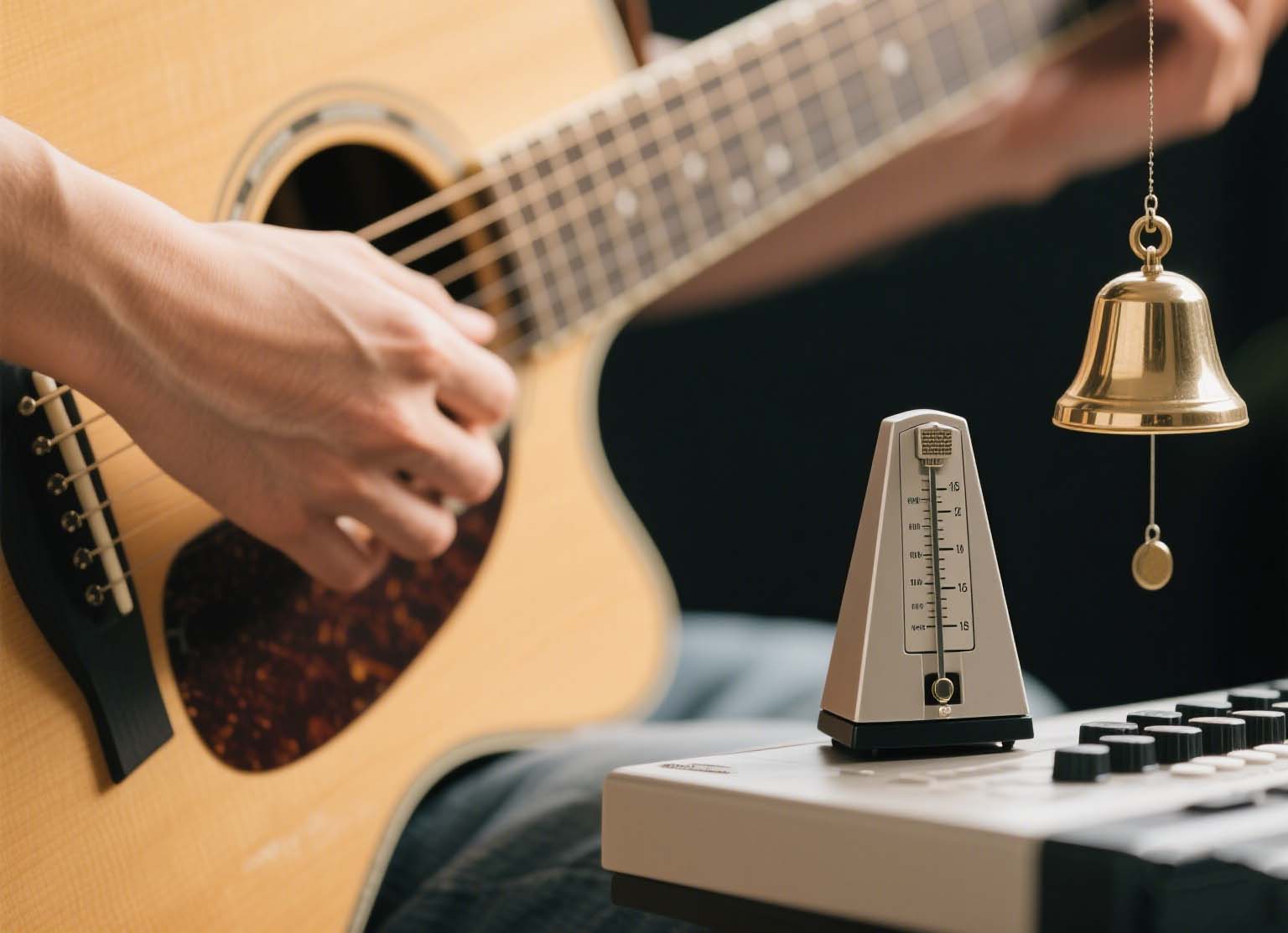I. Understanding Polyrhythms
1. The Mathematical Foundation
Polyrhythms occur when two or more different rhythmic patterns are played simultaneously. The most common polyrhythms are expressed as ratios like 3:2 (triplets against duplets), 4:3 (sixteenth notes against triplets), and 5:4 (quintuplets against sixteenth notes). Understanding the mathematical relationship between these patterns is crucial for effective practice. For example, in a 3:2 polyrhythm, every third note of the first pattern will align with every second note of the second pattern.
2. Cultural and Historical Context
Polyrhythms are foundational in many musical traditions, particularly West African drumming (where 12/8 patterns create complex 3:2 and 4:3 relationships), Indian classical music (where tihai patterns create cross-rhythmic tension), and modern genres like progressive metal (where bands like Meshuggah employ 5:4 and 7:8 polyrhythms). Studying these traditions provides valuable context for your practice approach.
II. Metronome Strategies for Basic Polyrhythms
1. The Subdivision Method for 3:2
Begin with the simplest and most common polyrhythm: 3 against 2. Set your metronome to a moderate tempo (60-72 BPM) and follow this progression:
- Count the least common multiple (LCM) of beats: For 3:2, the LCM is 6. Count "1-2-3-4-5-6" with the metronome clicking on 1 and 4.
- Tap the 2-pattern (on beats 1 and 4) with your dominant hand while counting all six subdivisions.
- Tap the 3-pattern (on beats 1, 3, and 5) with your non-dominant hand while counting.
- Combine both patterns, focusing on the precise alignment points (beat 1).
2. The Accent Shifting Technique for 4:3
For the 4:3 polyrhythm, set your metronome to quarter notes and employ the accent shifting technique:
- Play triplets (3) continuously with your non-dominant hand, accenting the first note of each triplet.
- With your dominant hand, play quarter notes (4), creating a 4:3 relationship.
- Practice shifting your focus between the two patterns, first prioritizing the triplet grouping, then the quarter note grouping.
- Gradually increase tempo once you can maintain both patterns with equal intensity.
III. Advanced Polyrhythmic Training
1. The Pyramid Method for Complex Ratios
For challenging polyrhythms like 5:4, 7:5, or 9:8, use the pyramid method with your metronome:
- Set the metronome to a slow tempo (40-50 BPM) with each click representing the downbeat where both patterns align.
- Practice the faster pattern alone (e.g., the "5" in 5:4) for 4-8 measures.
- Switch to the slower pattern (e.g., the "4" in 5:4) for 4-8 measures.
- Alternate between patterns with decreasing intervals: 2 measures each, then 1 measure, then half a measure.
- Finally, combine both patterns, focusing on the alignment point at the downbeat.
2. The Displacement Exercise
To develop independence between patterns, practice rhythmic displacement:
- Master a basic polyrhythm (e.g., 3:2) with the metronome marking the downbeat.
- Shift the metronome to mark different positions within the pattern (e.g., the second note of the "3" pattern).
- Practice maintaining the polyrhythm with this displaced reference point.
- Systematically work through all possible displacement positions.
IV. Instrument-Specific Applications
1. Keyboard and String Instruments
For pianists and string players, apply polyrhythms to technical exercises:
- Practice scales with polyrhythmic patterns between hands (pianists) or between bow and left hand (string players).
- Apply 3:2 polyrhythms to arpeggios, with one hand playing triplets and the other playing duplets.
- Use the metronome to mark only the downbeats, forcing you to internalize the subdivisions.
2. Percussion and Drumset
Drummers can develop advanced coordination through these exercises:
- Play a steady 4/4 beat with bass drum and hi-hat while adding polyrhythmic patterns on the snare or toms.
- Practice "limb independence" by assigning different elements of a polyrhythm to different limbs.
- Use the metronome at half-tempo to mark alignment points, filling in the subdivisions yourself.
V. Compositional and Improvisational Applications
1. Creating Tension and Resolution
In composition and improvisation, polyrhythms create powerful tension and resolution effects:
- Introduce a polyrhythm to build tension, then resolve to a common pulse at pivotal moments.
- Use the metronome to practice transitioning between polyrhythmic sections and straight rhythmic passages.
- Experiment with "polyrhythmic modulation" - shifting from one polyrhythm to another (e.g., 3:2 to 4:3) while maintaining a consistent pulse.
2. Practical Performance Strategies
When performing polyrhythms in ensemble settings:
- Identify "anchor points" where patterns align and use these as reference markers.
- Practice with a metronome that emphasizes these alignment points.
- Develop clear physical gestures that communicate the polyrhythmic structure to other performers.
Note: Always begin polyrhythm practice at slow tempos (40-60 BPM) and increase speed only after achieving precision and comfort. Use apps like PolyNome or Rhythm Trainer that can produce multiple simultaneous click tracks for advanced practice.






